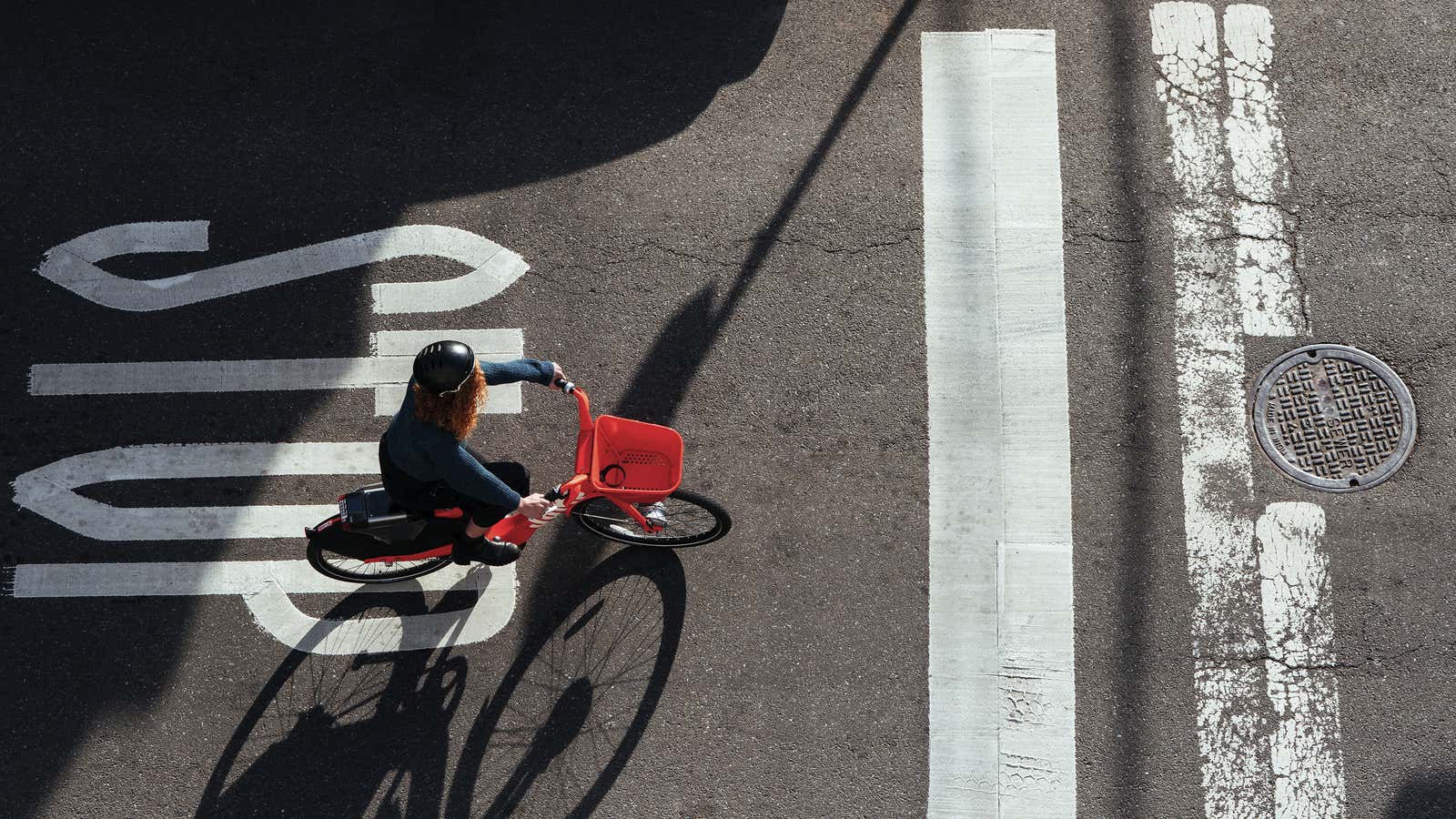Instead of waiting for an Uber to arrive, it seems that the company’s CEO, Dara Khosrowshahi, would be happy if you just got on a bike.
Khosrowshahi told the Financial Times Aug. 26 that Uber is shifting away from recommending its main service—cars driven by regular people hailed through its app—to on-demand bikes and scooters for short trips around cities.
“During rush hour, it is very inefficient for a one-ton hulk of metal to take one person 10 blocks,” Khosrowshahi, who is celebrating one year at the helm of Uber, told the FT. “We’re able to shape behavior in a way that’s a win for the user. It’s a win for the city.”
Uber acquired Jump bikes, a dockless bike-sharing startup based in Brooklyn, earlier this year. The service offers electric bikes in cities across the US, including Chicago, Austin, San Francisco, and Washington DC. The bikes have built-in locks and generally cost around a few dollars for a half-hour ride. Where available, users can now grab bikes through Uber’s main app.
Lyft seemed to follow on Uber’s heels by purchasing Motivate, the company behind many cities’ bike-sharing programs, including New York’s CitiBike and San Francisco’s Ford GoBike system. (Motivate recently launched e-bikes in New York.)
Uber also invested in Lime earlier this summer, and committed to adding its dockless electric scooters and bikes in its app, as well as public-transit ticketing system Masabi, in an effort to turn Uber’s app into a “urban mobility platform,” Khosrowshahi told the FT.
Khosrowshahi conceded to the FT that short bike trips are likely to be less lucrative for Uber than car trips, but said drivers he’s spoken with are encouraged by the potential to spend less time stuck in traffic in cities and more time completing longer—and more expensive—trips.
Shifting toward smaller, more nimble methods of transport could also ease congestion within crowded cities. New York recently became the first US city to set a cap on the number of Uber vehicles that could ride on its streets, with the city arguing in part that Uber drivers caused “the congestion grinding our streets to a halt.” While there are almost certainly more important ways New York could be mitigating its congestion issues, Uber’s new focus could definitely help ease some traffic clogging the city.
But the move is still a gamble for Uber, which is burning through billions of dollars each year. “Short-term financially, maybe it’s not a win for us,” Khosrowshahi said, “but strategically long term we think that is exactly where we want to head.”
